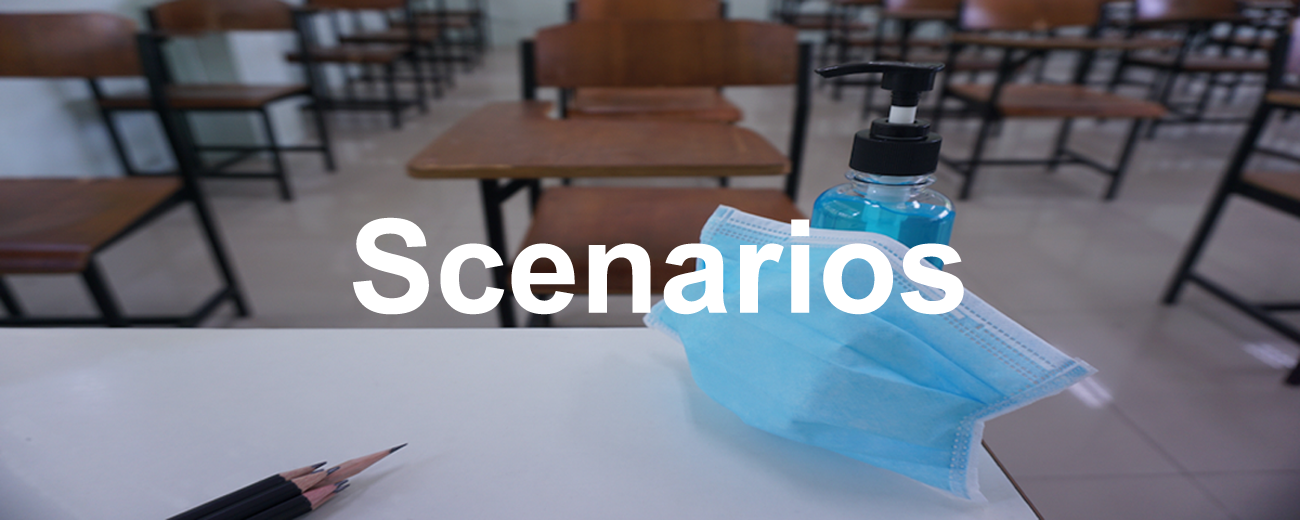Scenario 1
-
100% In-School Model (all students/all staff in school at the same time)
- This scenario would be possible only with diminished physical distancing requirements, temporary use of outside spaces, and/or other spaces not on our campuses.
- Most classrooms in our buildings allow for 10-12 students using 6-foot physical distancing, even with the removal of non-essential furniture.
- Currently, average class sizes are 20-28 students, depending on grade and content area. Therefore, this scenario would necessarily envision physical distancing of less than 6 feet.
- Other health mitigation measures, such as face coverings, hand washing, and extensive sanitizing, would be in place. Any large group gatherings would be restricted.
- This scenario would be possible only with diminished physical distancing requirements, temporary use of outside spaces, and/or other spaces not on our campuses.
Scenario 2
-
Hybrid or Staggered Schedule Model
- This scenario would allow for only half of the student population in the buildings at any one time (50% capacity).
- Scheduling could include every other day, students attending for half-days, or students attending for a 4-5 day week every other week.
- Students would be engaged with remote learning when not physically in school. This would include modifications and changes from the previous remote learning model based on feedback from teachers, parents, and students.
- This scenario would allow for only half of the student population in the buildings at any one time (50% capacity).
Scenario 3
-
Remote Learning Model
- This scenario would involve a fully remote learning model, with no students or staff in school. This would include modifications and changes from the previous remote learning model based on feedback from teachers, parents, and students.
-
Note: Scenarios 1 and 2 would both include stringent adherence to health and safety protocols as determined by the CDC, Department of Health, and other applicable agencies and professionals.


